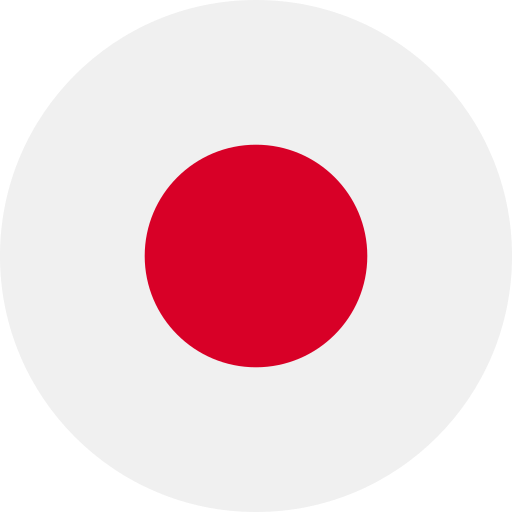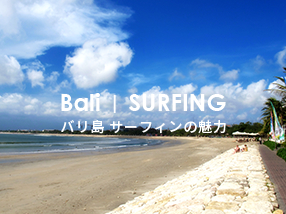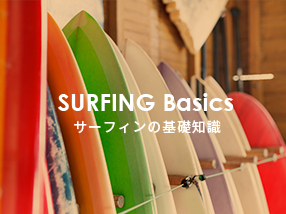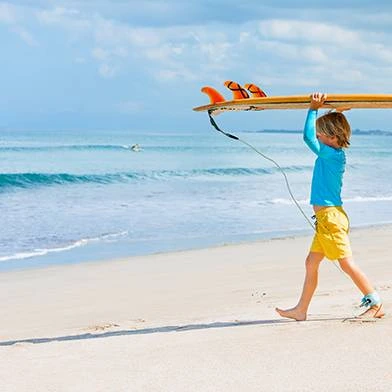
In the waves of Bali
Meet the new you.
SURFING Basics
Surfing Basics
DEKOM owner says
We have already told you about the appeal of surfing, so let us explain a little about surfing for those of you who are new to the sport. Please read the table of contents below, even if you are just interested in the parts that interest you.
1. What kind of waves do you practice surfing for the first time?
2. Surfing equipment
3. Type of surfboard
4. Isn't surfing dangerous?
5. What about insurance?
6. What if I have bad eyesight?
7. What about sun protection?
8. At what age can children start?
9. How old do I have to be to surf?

1. What kind of waves do you practice surfing for the first time?
Originally, surfing involves riding the slope (referred to as the "face" in surfing terminology) of the wave before it breaks. A beautiful wave forms a clean slope on both sides, and this slope continues to form horizontally. Waves that you can ride for a long distance can be several hundred meters long. Additionally, the slope can become tunnel-shaped, and you can ride inside that tunnel (the "tube"), which you might have seen in photos or videos of surfing in places like Hawaii. However, only intermediate to advanced surfers can ride these types of waves, as they require considerable skill.
For beginners, the waves they practice on are relatively small waves, and they practice on the white water after the wave has broken (referred to as "soup" in surfing terminology). These waves may appear small and easy when viewed from the beach, but when you try it, they are quite difficult, and the waves have more power than expected. However, once you manage to ride them, it feels amazing. By practicing on this "soup," you gradually improve, and once you reach a certain level, you can challenge yourself to surf on the "face" of the wave before it breaks, out in the open water.
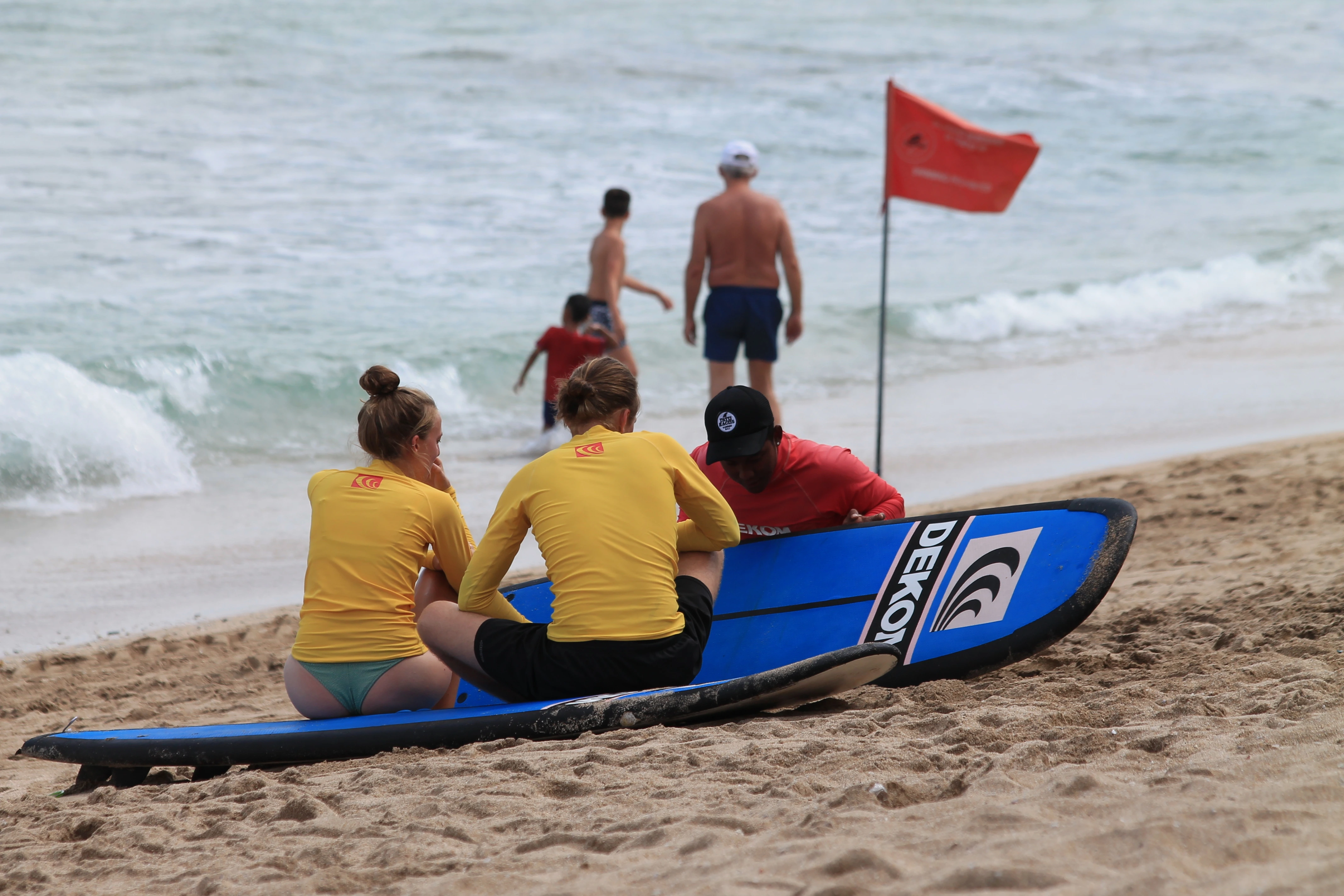
2. Surfing equipment
The equipment needed for surfing is very simple. It consists of just a "surfboard" and a rubber cord that connects the surfboard to your ankle to prevent the board from being washed away, called a "leash cord". Surfboards used in surf schools can be used as they are, but regular surfboards require the application of "wax" on the board to prevent slipping.
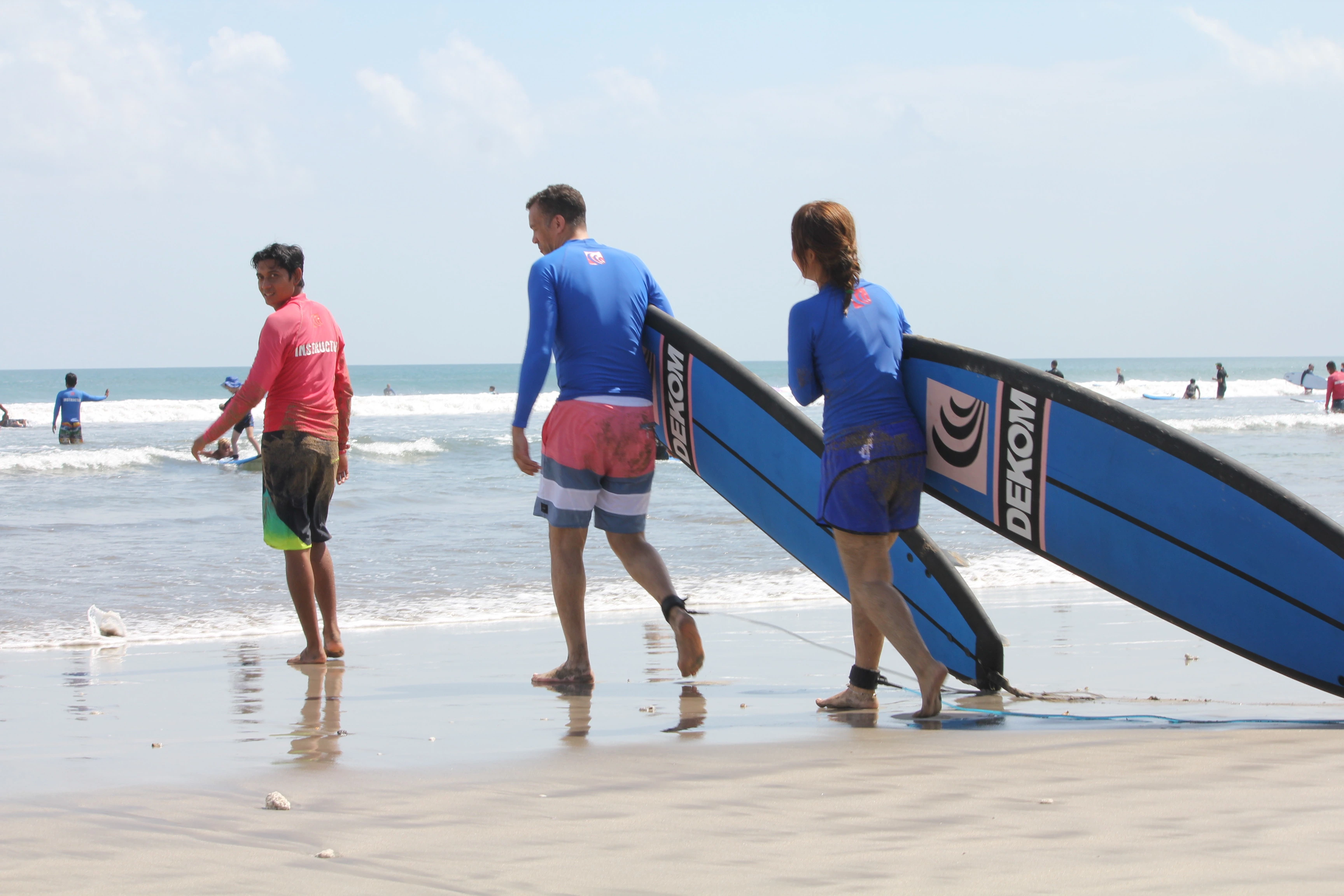
3. Type of surfboard
There are several types of surfboards. The shape of the surfboard is determined by its "length, thickness, and width". Broadly, surfboards are divided into "longboards" and "shortboards". In addition, there is the "funboard" between the longboard and shortboard.
The length of a longboard is 9 feet (2.7 meters) or more, a funboard is between 7 feet and 9 feet (2.1 meters to 2.7 meters), and a shortboard is typically 7 feet or less.
So, what impact do the length, thickness, and width have?
In simple terms, a surfboard is like a boat— the larger it is, the more stable it becomes, and the smaller it is, the more maneuverable it is. Therefore, for beginners, it’s a good idea to practice on a larger surfboard and gradually switch to a smaller one as you improve; this is the key to getting better quickly (if beginners practice on a thin, small surfboard just because it's cool, they won't improve as quickly).
At the Decomsurf surf school, there are 30 surfboards available for beginners, and we select the best size based on the customer's experience and physique for them to practice with.
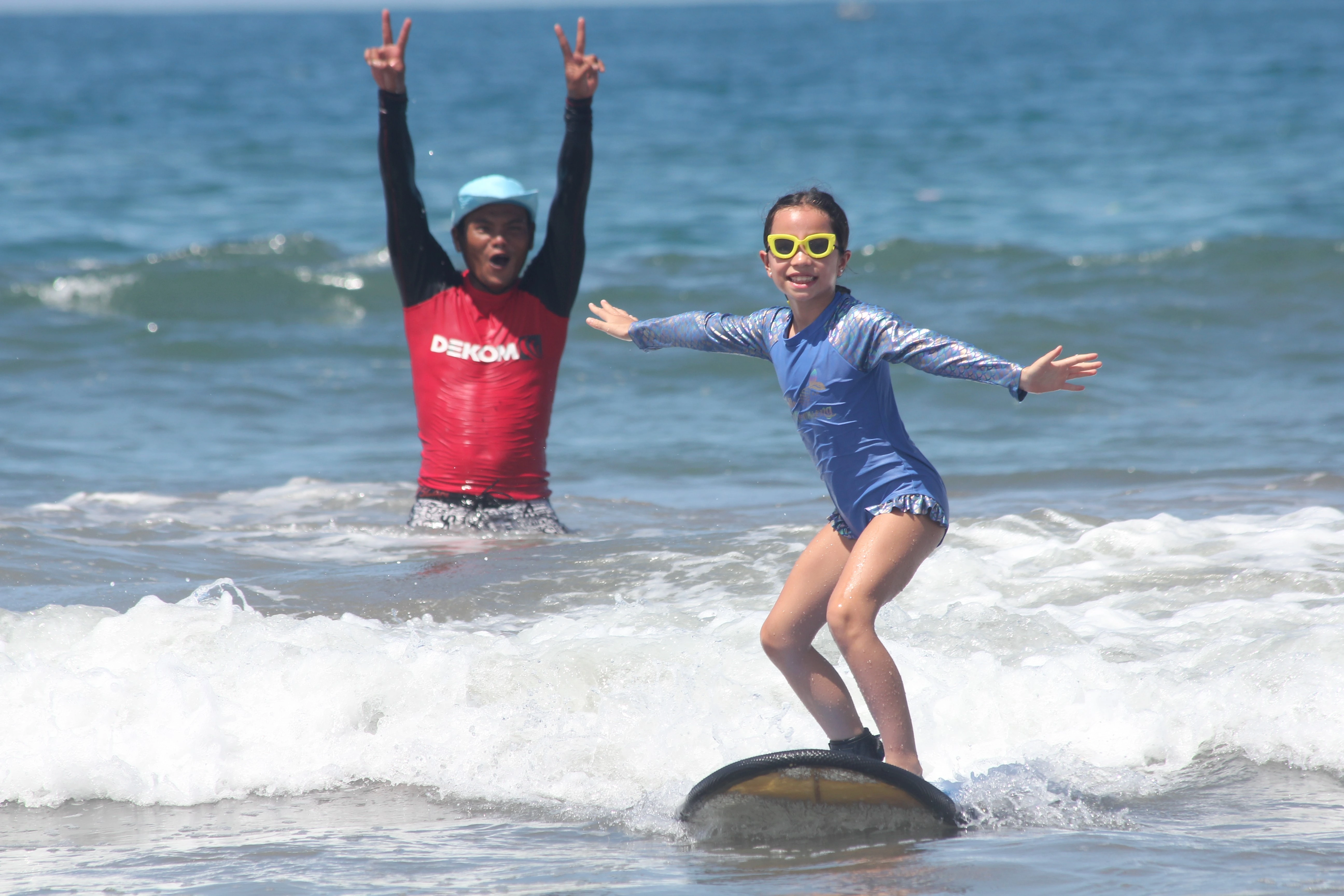
4. Isn't surfing dangerous?
Surfing, like other sports, can result in injuries, but by doing proper warm-ups and following the instructor's instructions with attention, the risks can be minimized.
① Warm-up Surfing is a full-body workout. It also requires sudden movements. Make sure to loosen your joints and muscles with a proper warm-up. Warm-up exercises are the best prevention against injuries.
② Instructor’s Instructions The instructor will tailor the lesson to your level. While you may want to challenge yourself with bigger waves further offshore, it is important to follow the instructor's guidance to improve safely, enjoyably, and effectively.
③ Self-management Water sports have resistance from the water, which can cause fatigue more than you might expect. The level of fatigue varies from person to person. Pushing yourself when tired can lead to injuries. If you feel tired, let the instructor know and take a proper break. The required rest time varies from person to person, so think about your physical condition and control your energy accordingly.
④ When Injured Even with small injuries, always inform the instructor. They will provide appropriate treatment. For minor injuries, first aid supplies will be used, and if necessary, Decom staff will guide you to the emergency hospital. The emergency hospital costs will be covered by the accident insurance provided by Decom Surf School (Limits: death or permanent injury Rp.335,000,000, injury Rp.33,550,000). However, as there are limits to the surf school insurance, we recommend purchasing overseas travel accident insurance in Japan before you depart for your trip.

5. What about insurance?
Decom Surf School is covered by accident insurance with the following limits:
Death or permanent injury: Rp.335,000,000, Injury: Rp.33,550,000. We recommend that customers purchase more comprehensive overseas travel accident insurance in Japan.

6. What if I have bad eyesight?
Since surfing is a water sport, it can be dangerous if you can’t see. For those who usually wear glasses, we recommend using disposable contact lenses. As for contact lenses in the water, they generally won’t fall out unless you open your eyes underwater or rub your eyes forcefully.
If you plan to surf with glasses, we recommend securing them with sports rubber straps to reduce the risk of them falling off. However, in strong waves, glasses may come off and be lost, so please be cautious. (Loss of glasses, contact lenses, etc. is not covered by Decom Surf School’s insurance).
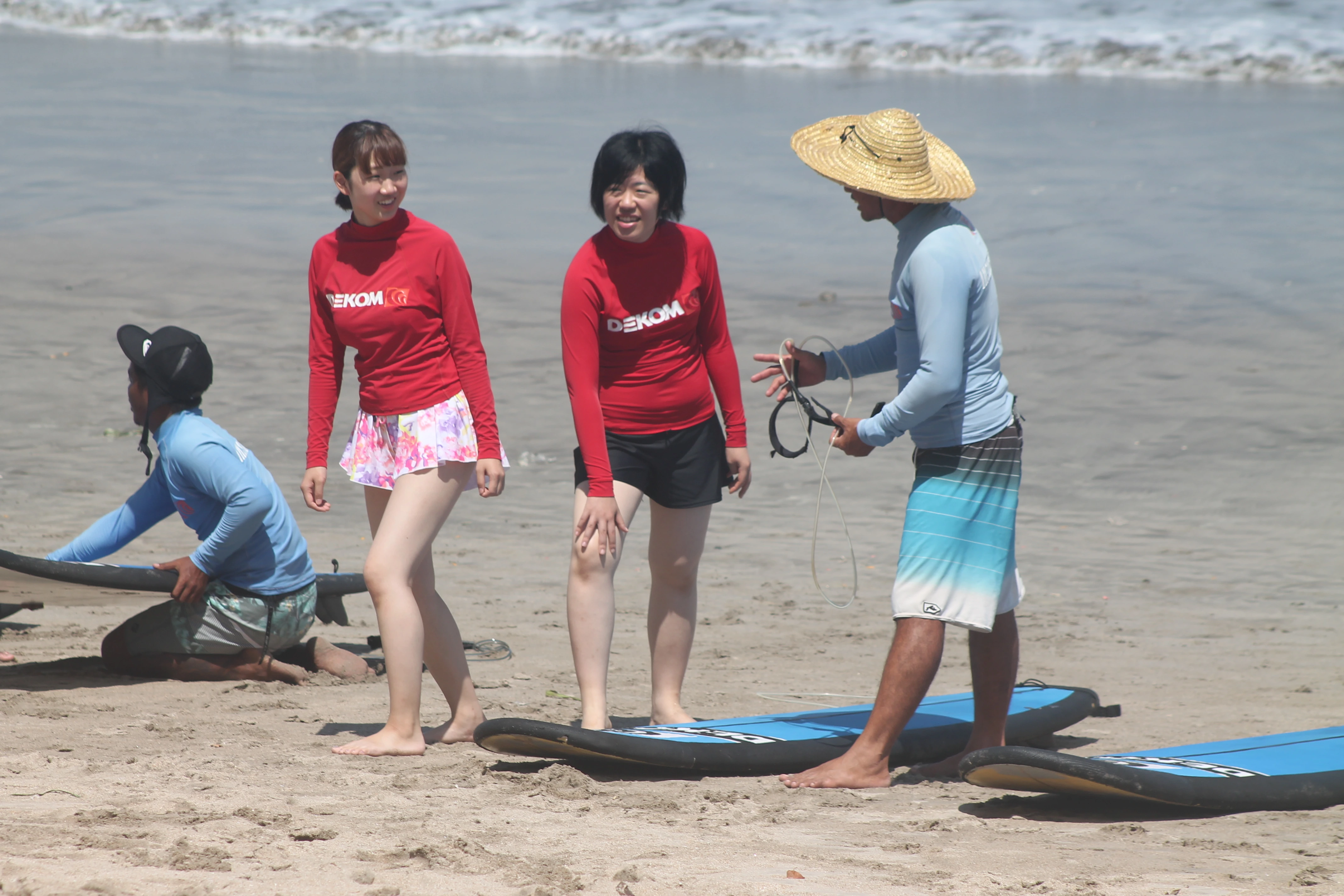
7. What about sun protection?
The sun and ultraviolet rays in Bali are quite strong, and you will get sunburned even on cloudy days. Some people do not wear sunscreen because they want to get a tan, but it is strongly recommended to always apply sunscreen as it can cause burns and sores. In addition to the face and neck, the backs of the calves (since you will be lying on the surfboard for a long time) and around the waist (even if you are wearing a rash guard, you may get sunburned) should not be overlooked. Be sure to apply sunscreen carefully.
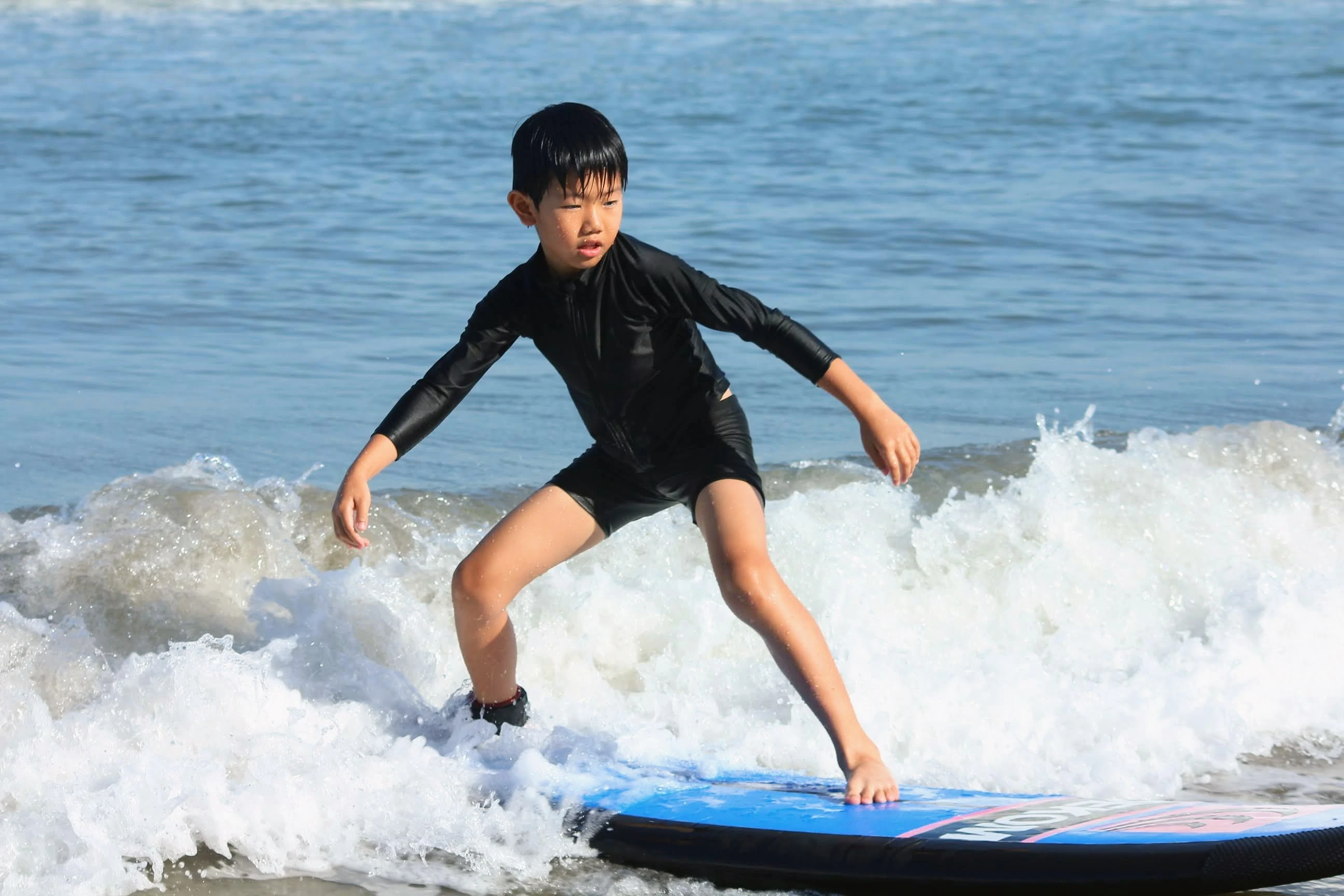
8. At what age can my child start?
There may be individual differences, so it is up to the parents' judgment, but many surf schools, including Decom Surf School, set the age requirement at 6 years and older. This is in line with the age limit of the accident insurance the surf school is enrolled in.
At the parents' discretion, children under 6 years old may also take lessons, but this is under the responsibility of the parents, and it is a mandatory condition that the child is enrolled in separate overseas travel accident insurance.
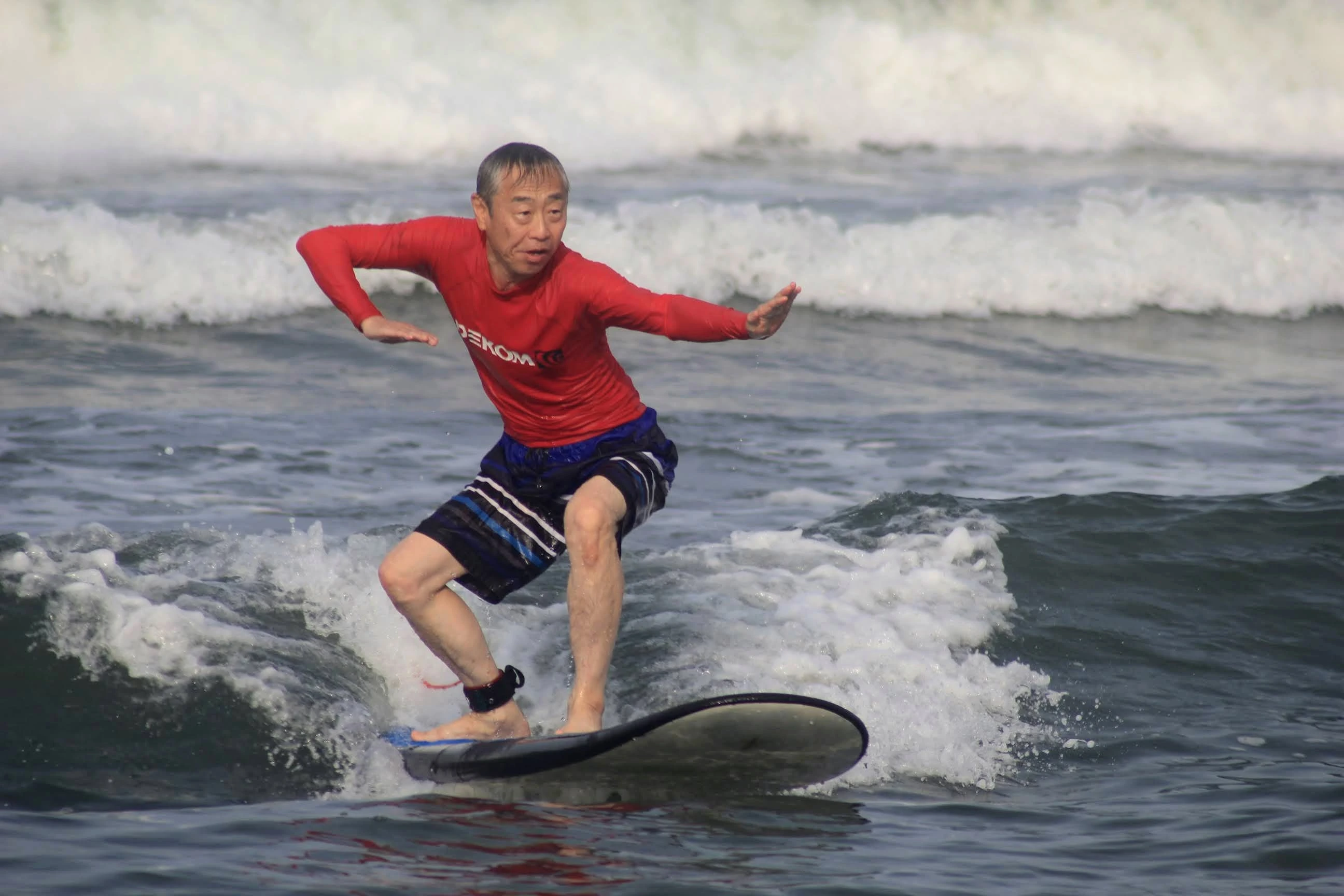
9. How old do I have to be to surf?
There may be individual differences, so this is also based on the judgment of the person involved and the customer. However, like with children, many surf schools, including Decom, set the age limit at 65 years and younger. This is in line with the age limit of the accident insurance the surf school is enrolled in.
At the customer's discretion, individuals over 65 may also take lessons, but this is under the customer's responsibility, and it is a mandatory condition that the individual is enrolled in separate overseas travel accident insurance.
Please feel free to contact us for more information.
We will respond to you in Japan.
Please feel free to contact us for more information.
We will respond to you in Japan.
